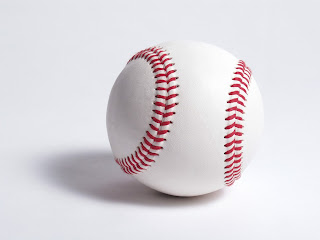Whether you are new to hearing loss or have been living with
hearing loss for years, there is so much jargon out on the internet that
sometimes we lose track of what they mean.
Although, the list is not
all-inclusive it should give a you a good base to understanding terminology
that you may come across while researching information, reading my blog or
talking to your professional hearing specialist.
American Speech Language Hearing Association (ASHA) - ASHA is the
national professional, scientific, and credentialing association for more than
166,000 members and affiliates who are audiologists, speech-language
pathologists, speech, language, and hearing scientists, audiology and
speech-language pathology support personnel, and students
Amplifier - an electronic component or device that increases the
loudness of sound.
Analog Hearing Aid - a basic hearing aid that amplifies sound based
on your audiogram.
Articulation Index (AI) - a tool used in audiology to predict the
amount of speech that is audible to a patient with a specific hearing loss
Asymmetrical Hearing Loss – Asymmetrical means degree the
Articulation Index (AI) is a tool used to predict the amount of speech that is
audible to a patient with a specific hearing loss and configuration of hearing
loss are different in each ear.
Audiology - the branch of science that studies hearing, balance,
and related disorders.
Audiologist – a health-care professional specializing in
identifying, diagnosing, treating and monitoring disorders of the auditory and
]] portions of the ear. Audiologists are trained to diagnose, manage and/or
treat hearing or balance problems.
Audiogram – the result of a hearing test and it shows you the
extent of any hearing loss in either ear.
Audiometer – a machine used for evaluating hearing loss which is
standard equipment at audiology centers. They usually consist of an embedded
hardware unit connected to a pair of headphones and a test subject feedback
button, sometimes controlled by a standard PC.
Behind the Ear Hearing Aid (BTE) – hearing aid in which the
components are placed behind the ear and the sound is delivered to the ear
through a tube connect to an ear mold.
Bilateral Hearing Loss – hearing loss is presented in both ears
Cerumen – medical terminology for ear wax.
Completely In Canal Hearing Aid (CIC) – hearing aid in which all or
nearly all of the aid is placed inside the ear canal.
Cochlea – spiral-shaped cavity of the inner ear that resembles a
snail shell and contains nerve endings essential for hearing.
Cochlear Implant – surgically implanted electronic hearing device
that provides a sense of sound to a person who is profoundly deaf or severely
hard of hearing.
Conductive Hearing Loss – hearing loss due to damage to the
conductive portion of the auditory system such as the eardrum or the bones in
the middle ear
Decibel (dB) – measurement of the loudness of a sound
Digital Hearing Aid – hearing aid with a digital processor that
converts analog sound to digital, and then back to analog.
Ear Canal – channel on the side of the head that the pinna directs
sound down to the eardrum.
Ear Drum – the thin membrane that separates the
outer ear from the middle ear; sound vibrates the membrane which transfers the
energy to the bones of the middle ear.
Feedback – the whistling sound that occurs when sound from a
speaker loops back to the microphone.
Frequency Band – in hearing aids refers to the divisions of
frequencies that can be adjusted for volume independently from other frequency
bands.
Hertz (Hz) – measurement of the speed of a sound wave, one cycle
per second = 1Hz
Impression – silicon cast of the shape of the ear and canal used to
make custom hearing aids and ear molds.
In The Canal Hearing Aid (ITC) – hearing aid that resides primarily
in the ear canal, but also extends into the bowl of the ear
In The Ear Hearing Aid (ITE) - hearing aid that fills the bowl area
of the ear
Sensorineural Hearing Loss – type of hearing loss in which the root
cause lies in the inner ear, or central processing centers of the brain
Speech Discrimination - refers to the ability to understand speech
when amplified to a comfortable level
Symmetrical Hearing Loss – refers to the same or similar degree and
configuration of hearing loss in each ear
Telecoil – device in a hearing aid that can connect with the
magnetic coils of a telephone and transfer the sound through the hearing aid
without feedback
Unilateral Hearing Loss – hearing loss is presented in one ear
while the normal hearing is presented in the other ear




